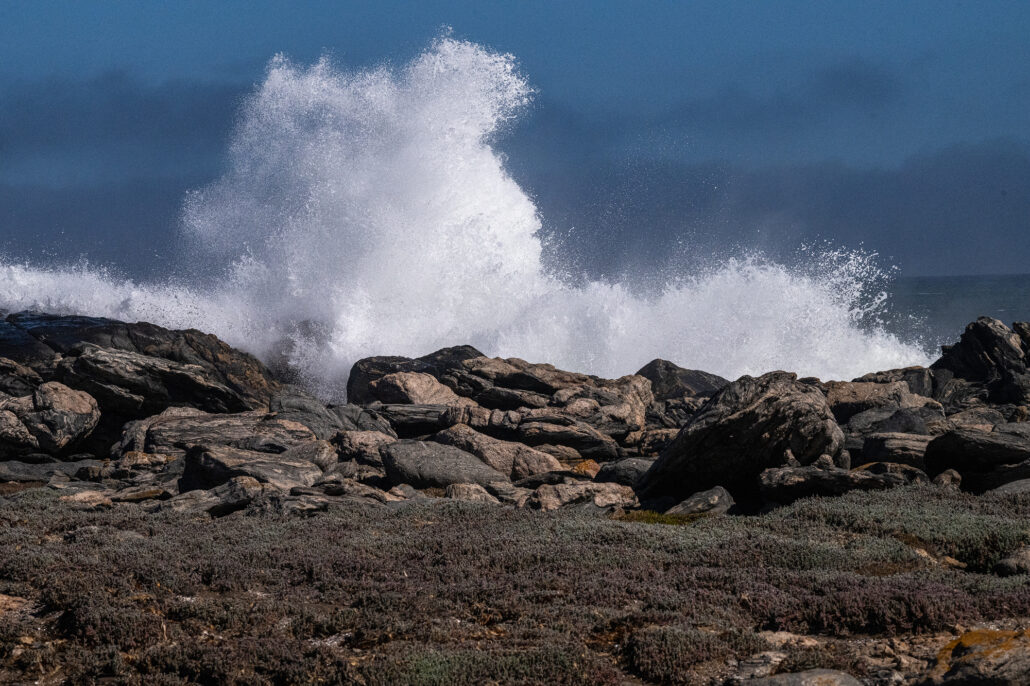Impermanence & Legacy + The Quiet Power of Observation
📍Kolmanskop + Lüderitz
When the Ghosts Whisper Back
Some mornings start slow. This wasn’t one of them.
We were up long before the sun. The drive to Kolmanskop was short but surreal, headlights catching the shimmer of sand drifts and long-forgotten fences.
Kolmanskop. The ghost town with a name that already sounds like a whisper.
A place born from diamonds. Once impossibly rich. Now surrendered to the desert. A place where time has all but stopped – or maybe just circled back to watch what it built crumble.

We had early access. Not too many visitors. No voices echoing off the old casino room walls. Just us. And the ghosts. And so many stories.
Once upon a time, in the middle of nowhere, a railway worker stopped to remove some stubborn sand from the tracks. It was 1908, and the man’s name was Zacharias Lewala. As he shoveled, something caught his eye. Not a pebble. Not glass. A diamond, shimmering like a tiny sun in the gravel.
And just like that, Kolmanskop was born.
The Diamond Rush Begins
Word spread fast. Within weeks, prospectors flooded into the barren Namib. They staked claims in a frenzy of pickaxes and pipe dreams. By 1912, the area was producing 11% of the world’s diamonds.
A town sprouted from the sand like a mirage… but it was real, and it was grand.
Elegant homes lined the sandy streets, owned by German engineers and mining officials. Walls were wallpapered in florals. Champagne was sipped under chandeliers.
Now, the desert reclaiming it all.
Desert Stories
This morning the light was incredible – golden and soft, sliding through broken windows and under doorframes. We chased it through the buildings, each room a new palette of sand and shadow.

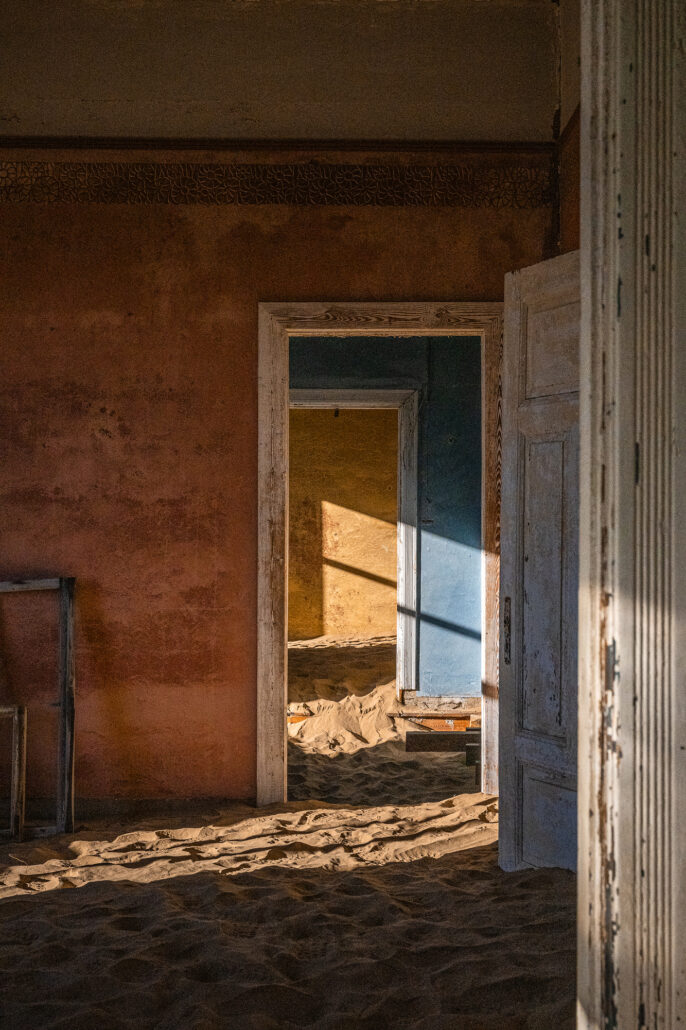
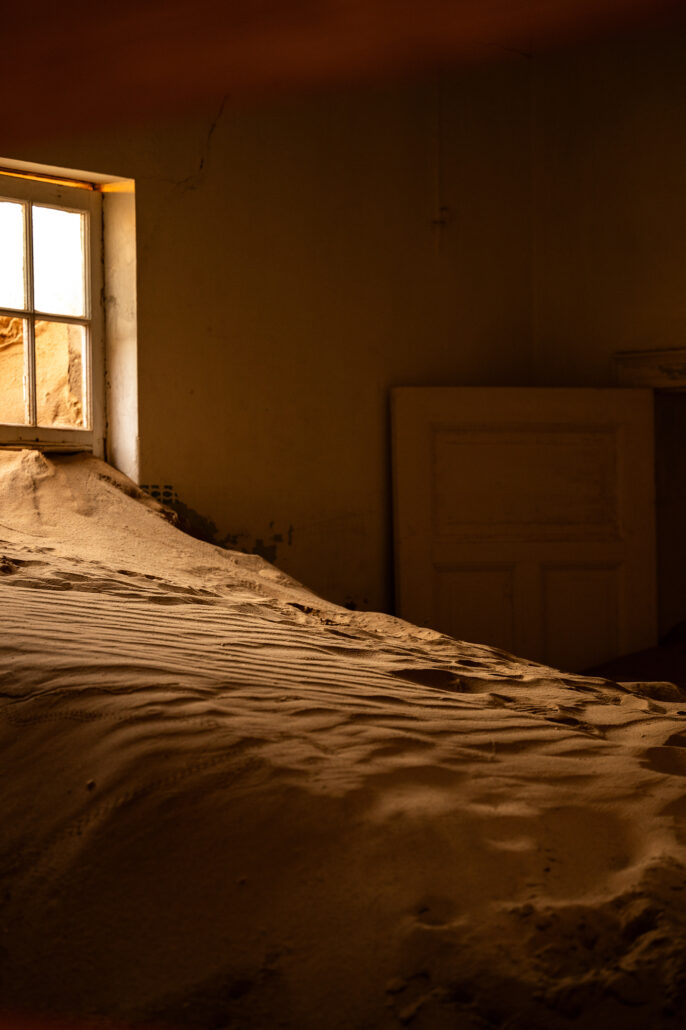
We tried to find the fabled ‘blue room’ … a glowing, Instagrammed icon. But in the flurry of dawn and dust, it evaded us. We ran through corridors, burst through half-buried doors, laughing like kids in a haunted maze. We didn’t find it in time for sunrise. But we found something else. Just as beautiful. A different kind of magic.
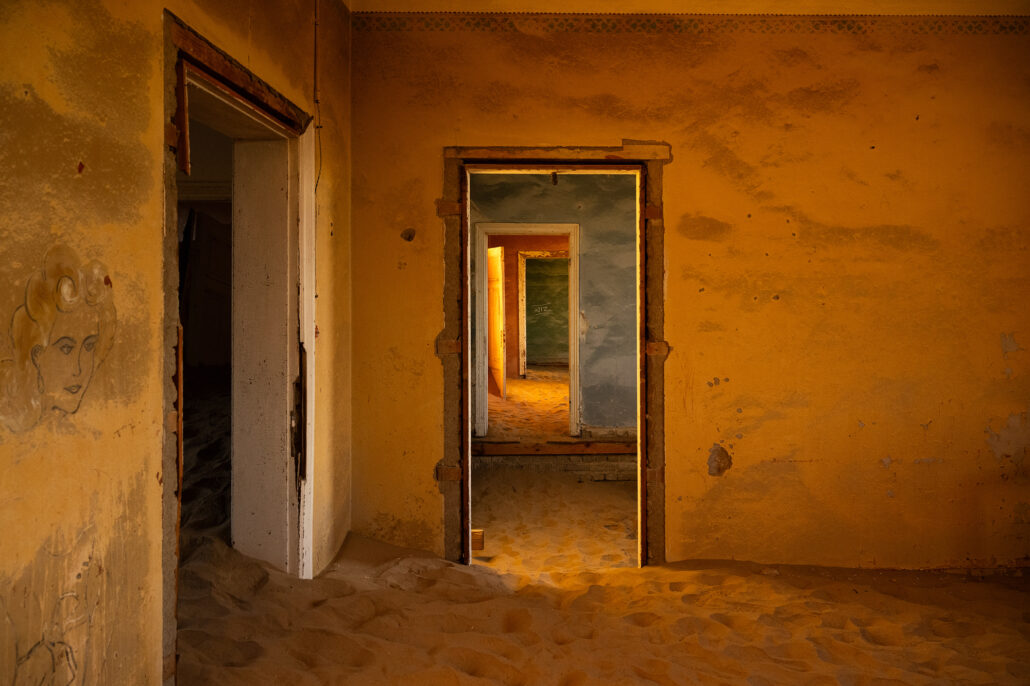
Later, when we weren’t looking, the blue room found us. Still stunning. Still quiet.
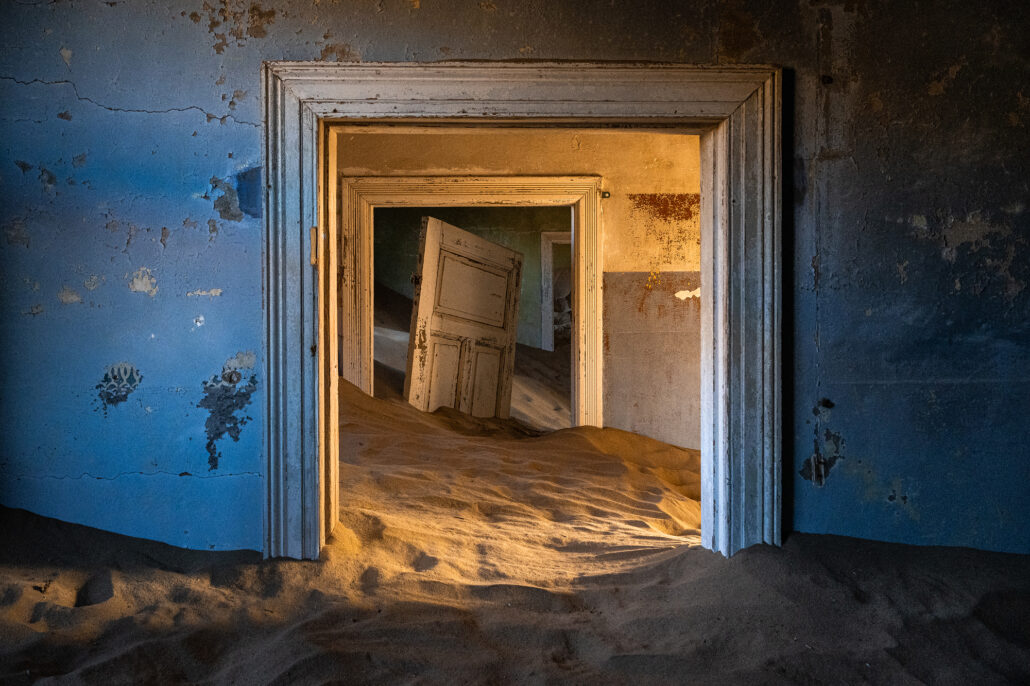
The Elegance of Decay
The hospital was… unsettling. We didn’t last long. Had to step out. Waited for some French tourists to wander in so we could casually tag along like we weren’t slightly freaked out.
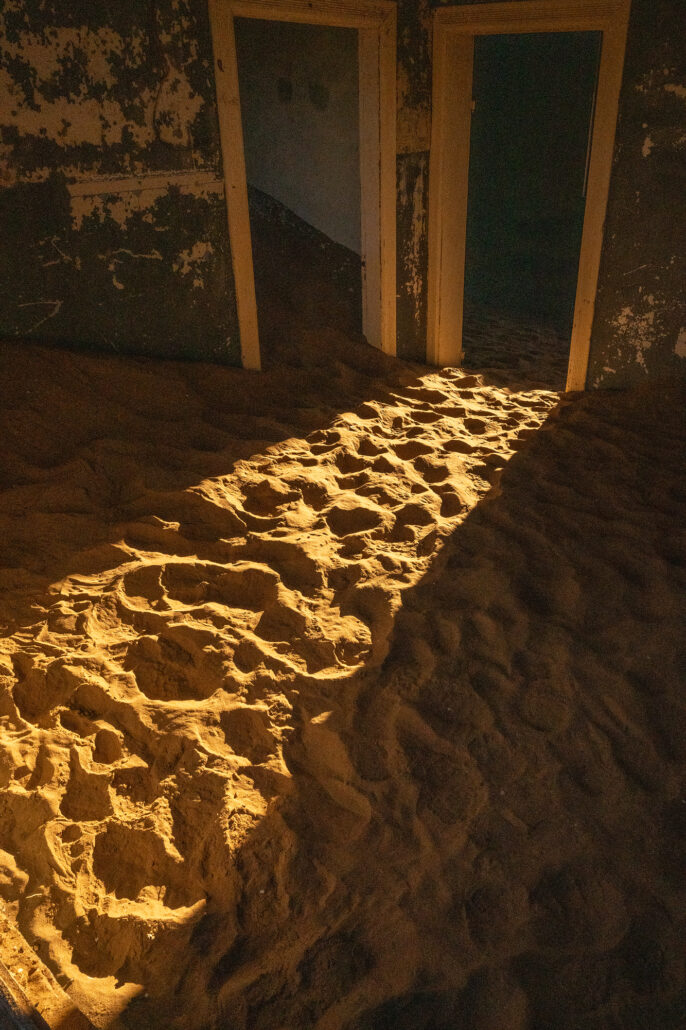
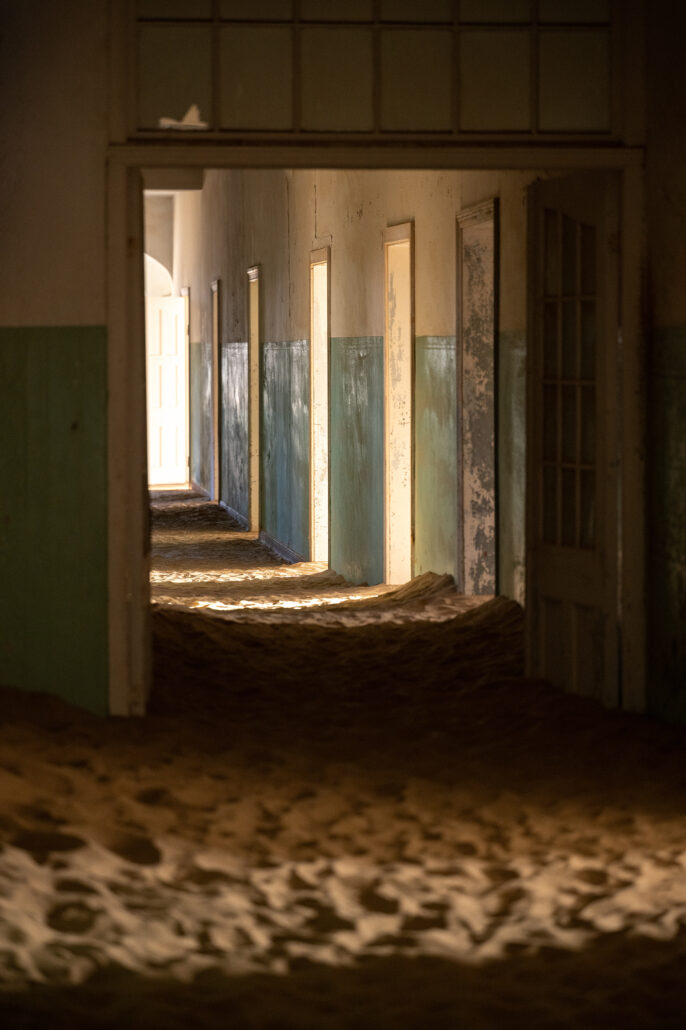
At its height, Kolmanskop was one of the wealthiest settlements in southwest Africa. There was a ballroom, a school, a hospital with the first X-ray machine in the region
(mostly used to stop miners from smuggling diamonds in their bodies), even an ice factory, in the middle of the desert.
Then came World War I. And then… richer diamond deposits were discovered further south near Oranjemund. People left. Nature didn’t.
By the 1930s, the town began to empty. Slowly. Elegantly. Like the last guests leaving a party. By 1956, Kolmanskop was completely abandoned.
And the desert… patient and unapologetic… moved in.
It blew through broken windows. It curled up staircases. It laid itself down in bedrooms and across dining tables.
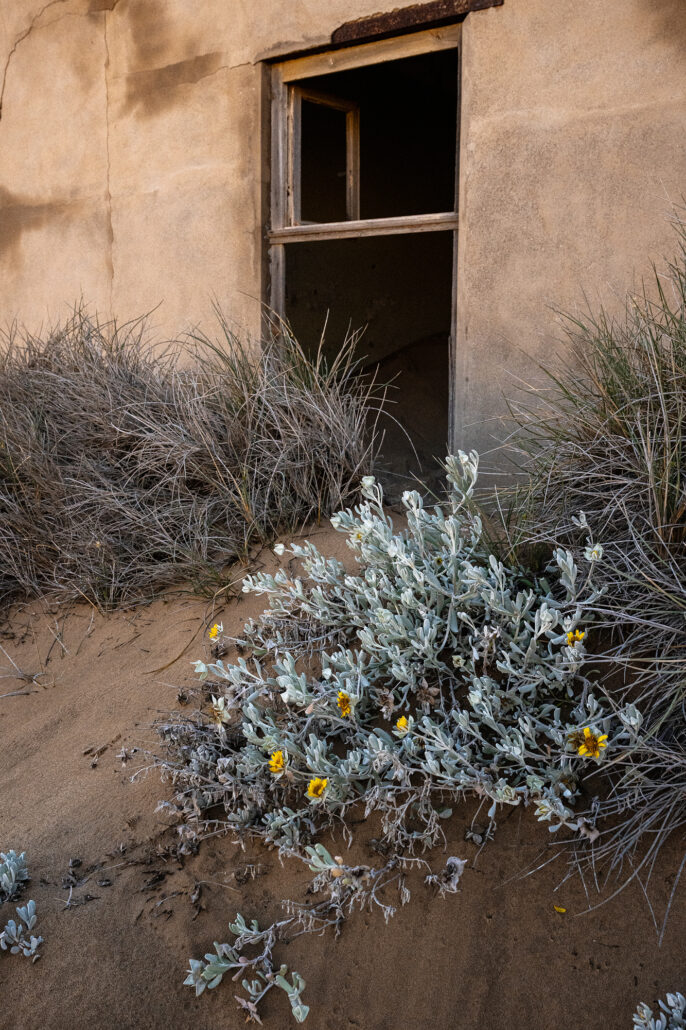
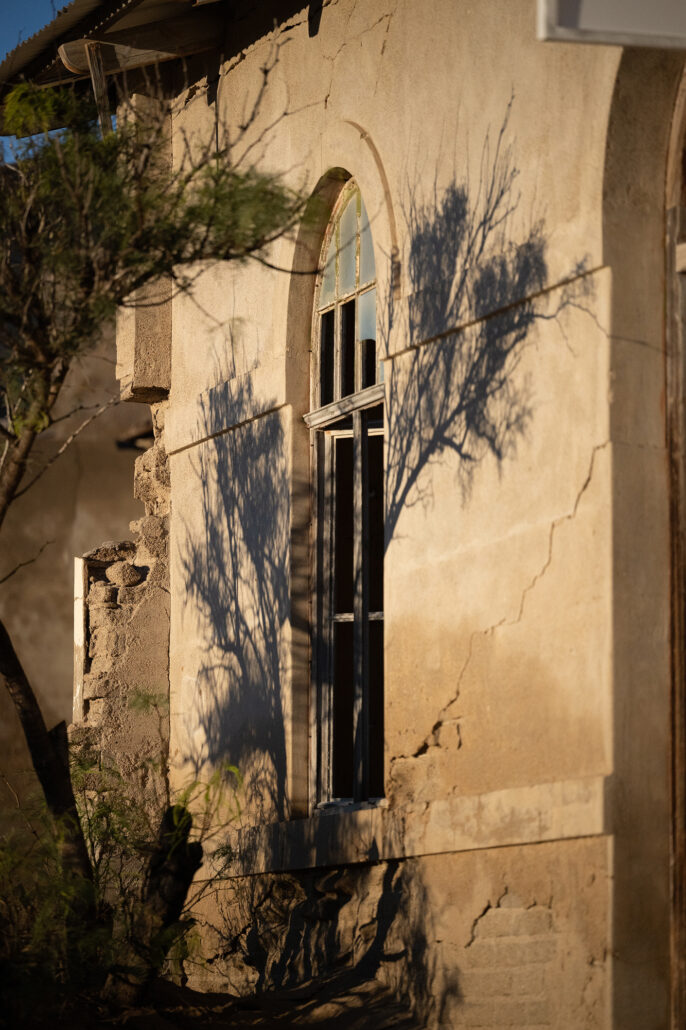
What makes this place so profound isn’t just the decay. It’s the elegance of it. Time here is slow. Gentle. Soft edges and golden silence. Each room a painting you can step into. A reminder that everything we build, no matter how grand, eventually dissolves into something else.
We imagined the stories. The diamonds. The dances. The dreams. All of it half-buried now, but still here.
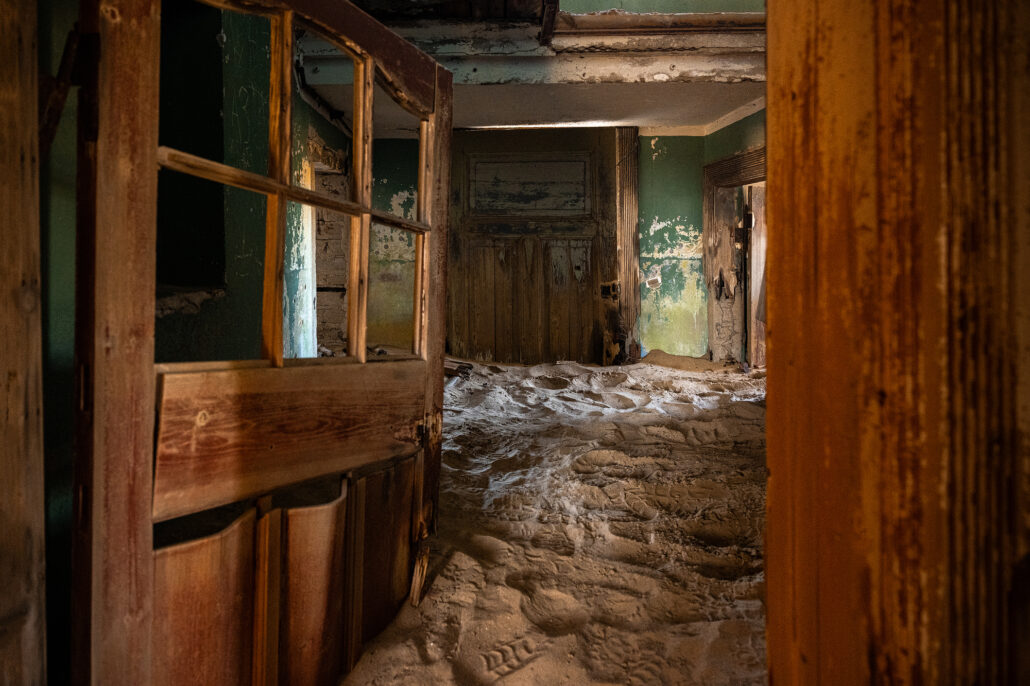
There was even an Ilford photo gallery tucked away. Random and beautiful. The prints were spectacular. Made us want to start over as photographers. We bought a T-shirt instead.
We had coffee in the old ballroom, now refurbished and echoing with fewer ghosts and more caffeine. We lingered there for a while. Not just for the warm cup in our hands, but because it felt like we were sitting inside a memory. Someone else’s. Ours now too. All the while thinking about what we’re building in our own life and how much of it will outlast us.
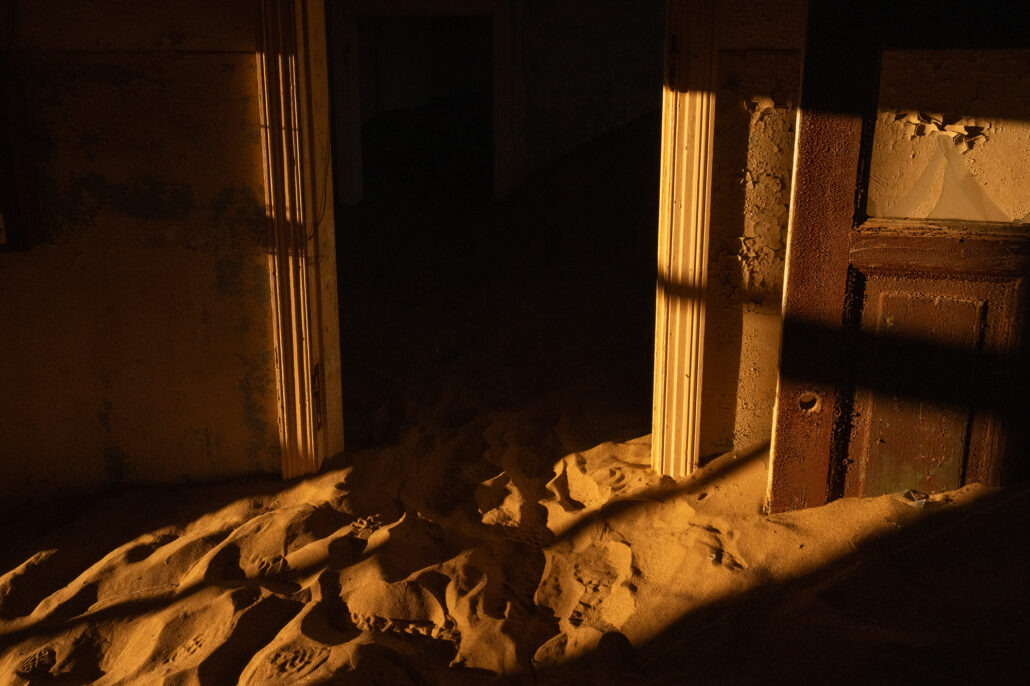
What the Sand Taught Us
It’s easy to chase meaning in big moments, the proposals, the events, the weddings. But the more we travel, the more we realize that meaning doesn’t shout. It whispers.
- In quiet towns with peeling paint.
- In hallways no one’s walked in years.
- In the stillness between steps.
Kolmanskop reminded us that we don’t have to leave behind monuments to be remembered. Sometimes, presence is the legacy. Being where you are. Seeing what most people scroll past.
Letting a place change you, even if you never speak of it again.
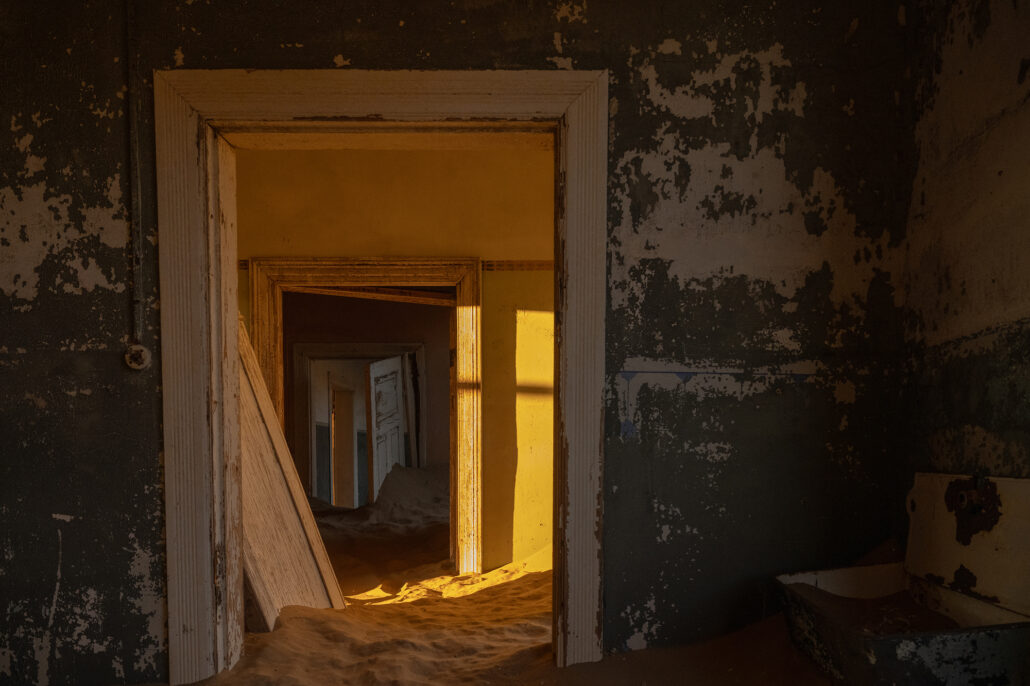
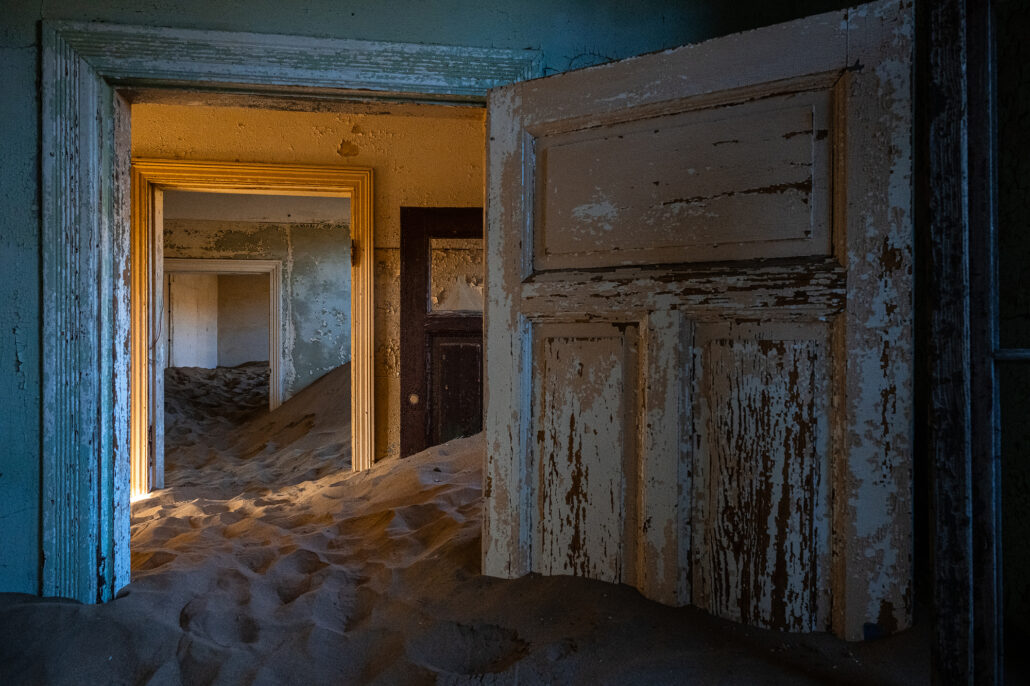
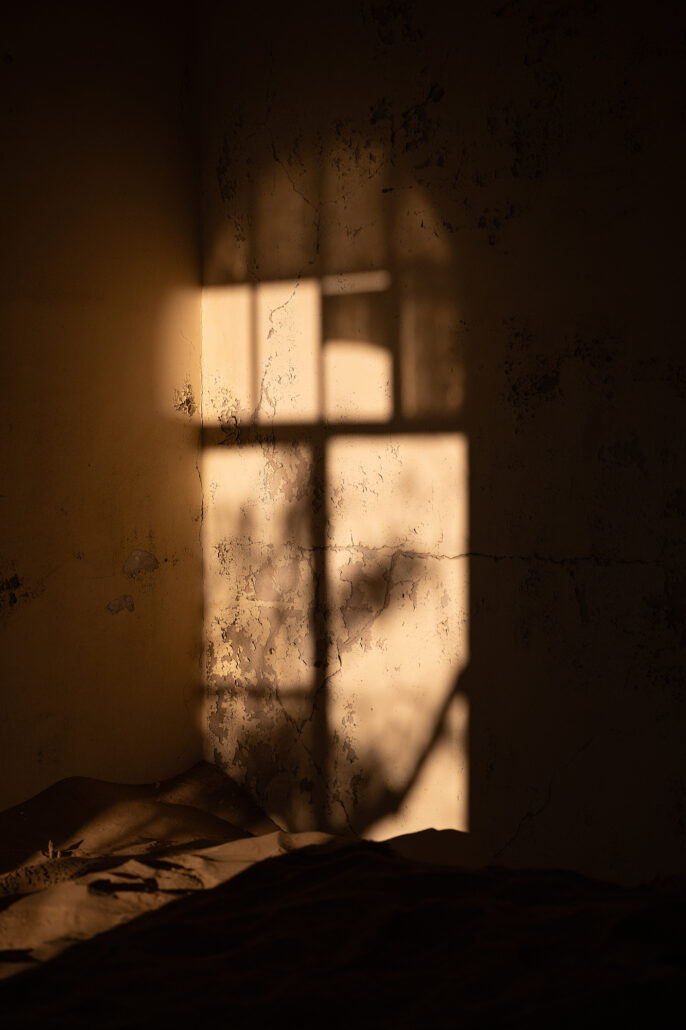
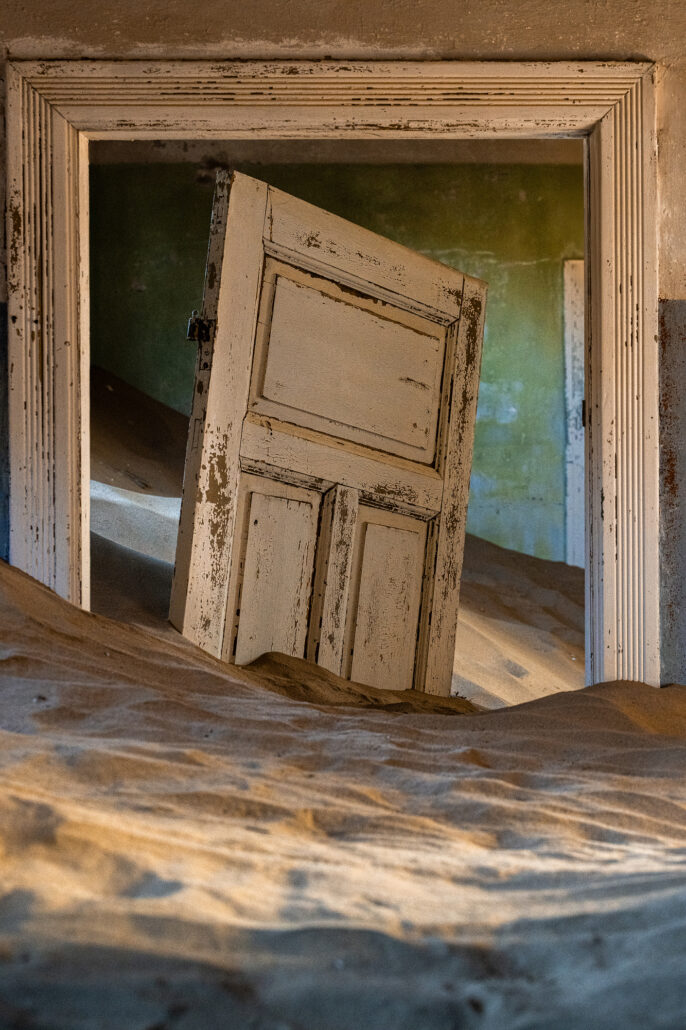
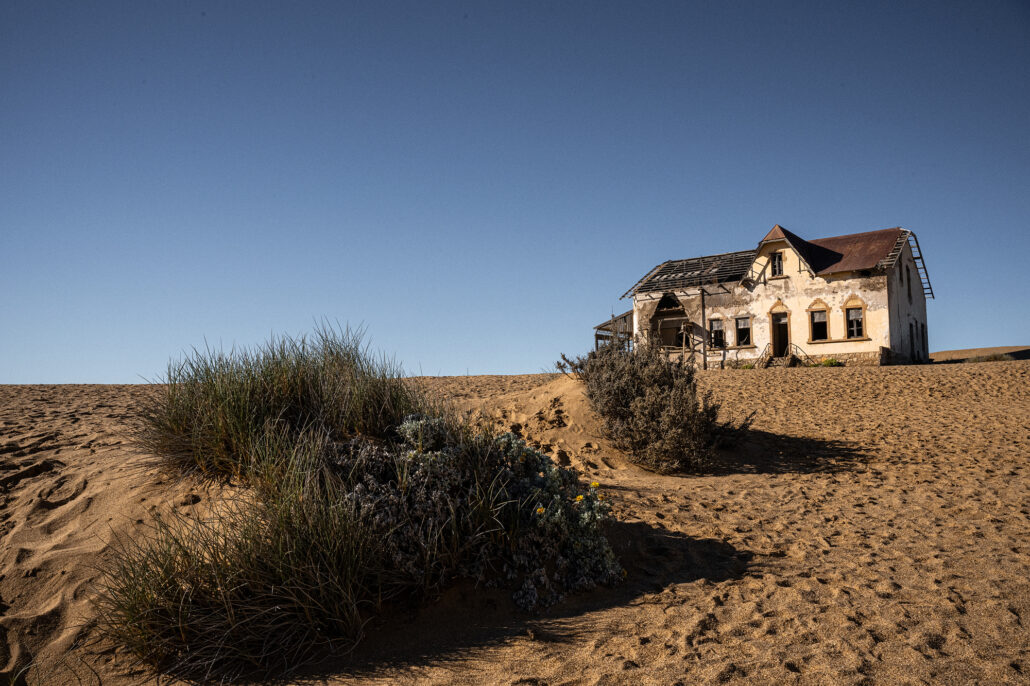
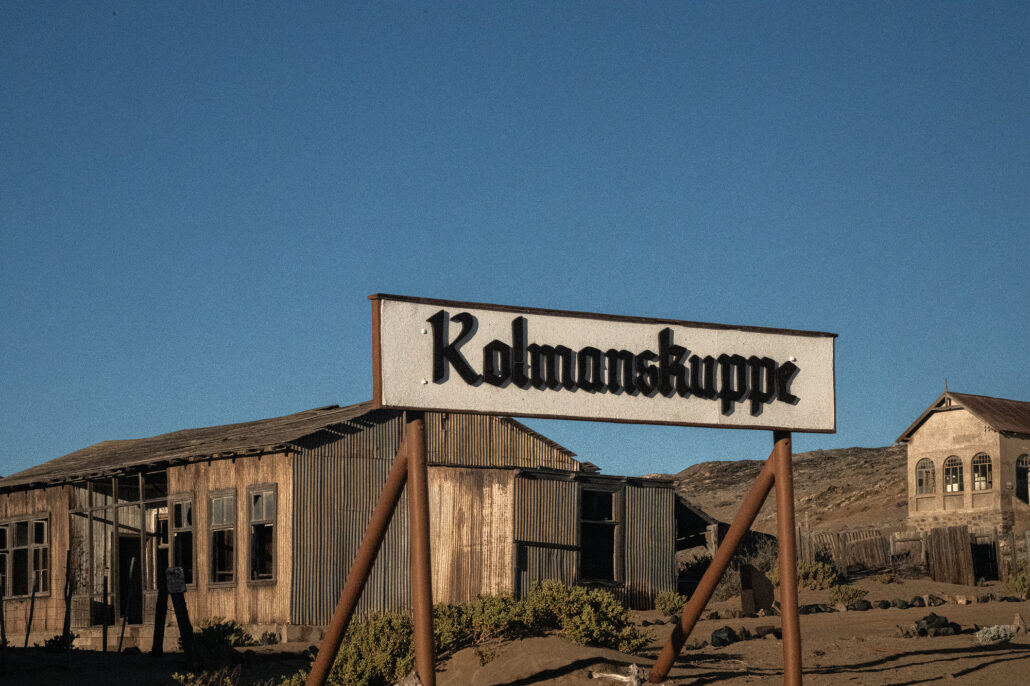
Changing Course: From Ghosts to Moonscapes
We left with every intention of returning for sunset. But once we looked through our morning images, and let it all settle, we realized we didn’t need to go back. The moment had already landed.
So we changed course.
Diaz Point was calling. And D701 was the road to get there. A drive that felt like crossing a moonscape – rocks, sand, wind, and a feeling that you were the only people left on earth.
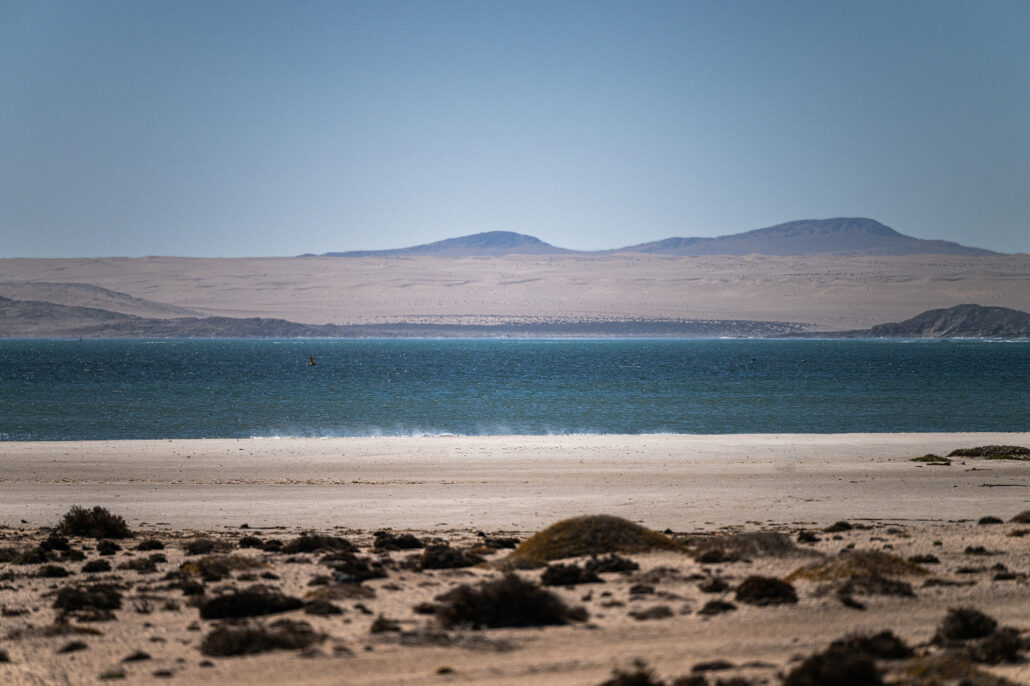

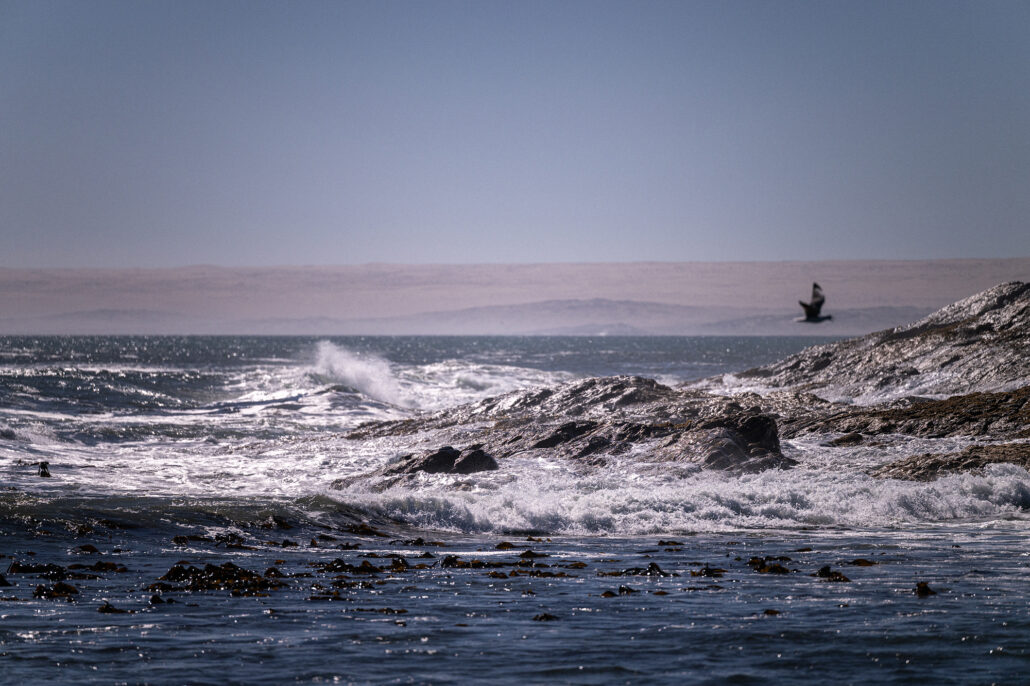
This is Sperrgebiet territory, the forbidden diamond area, and the signs made it very clear: stay on the road. We did.
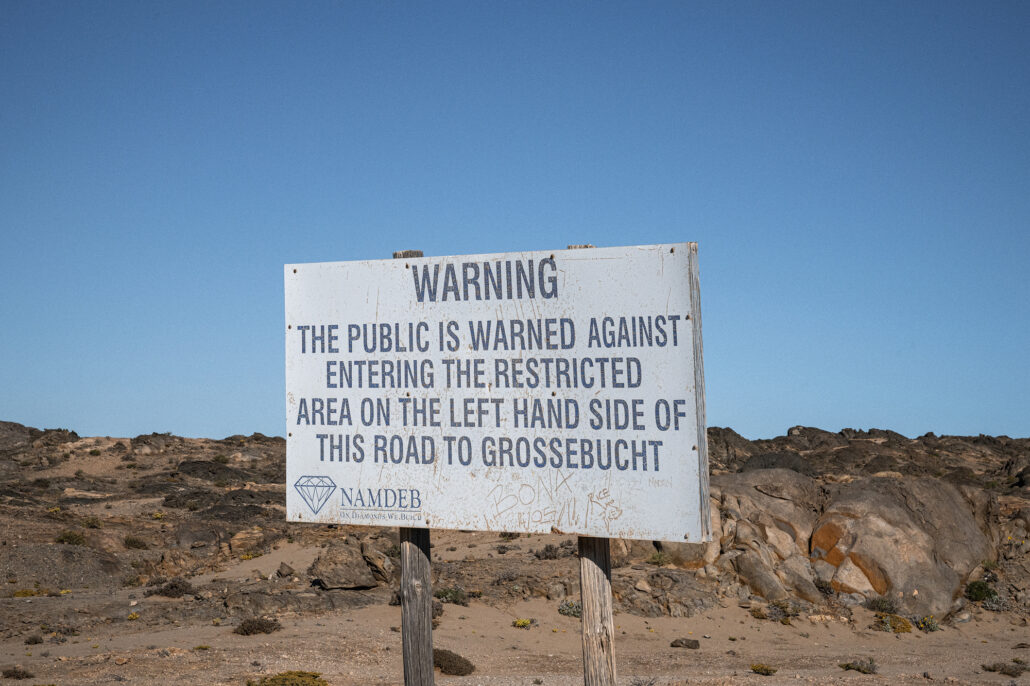
At Diaz Point, the Atlantic was wild. Waves crashing with ferocity. Wind in our hair. Sea spray on our faces. We heard sea lions, they sounded like Wookies. Looked around for Chewbacca. No luck. Couldn’t find them… but knew they were there.
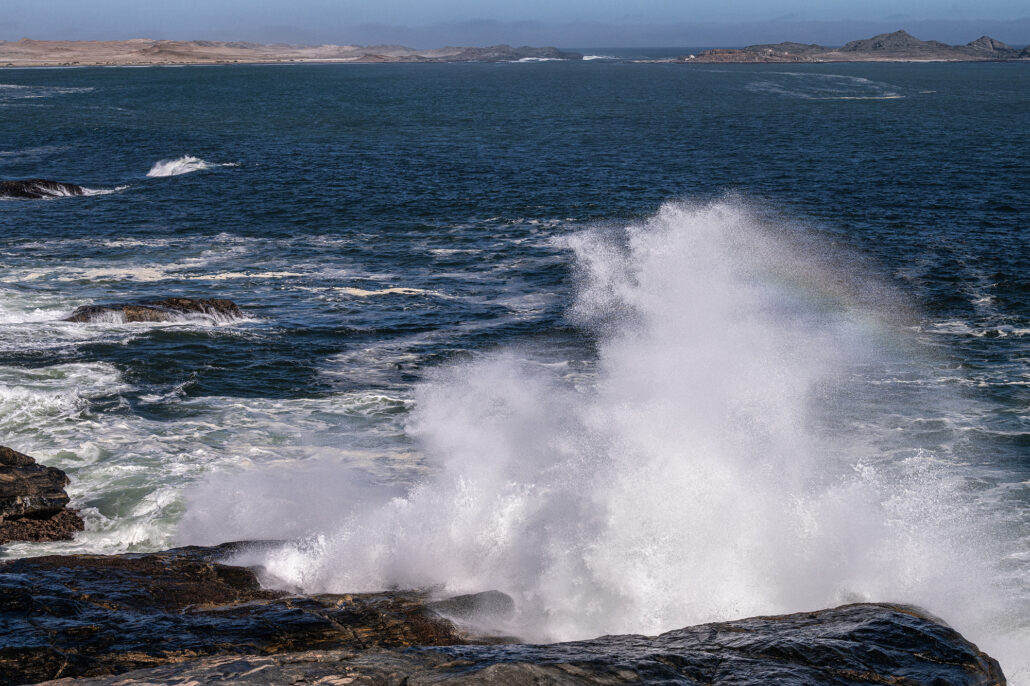
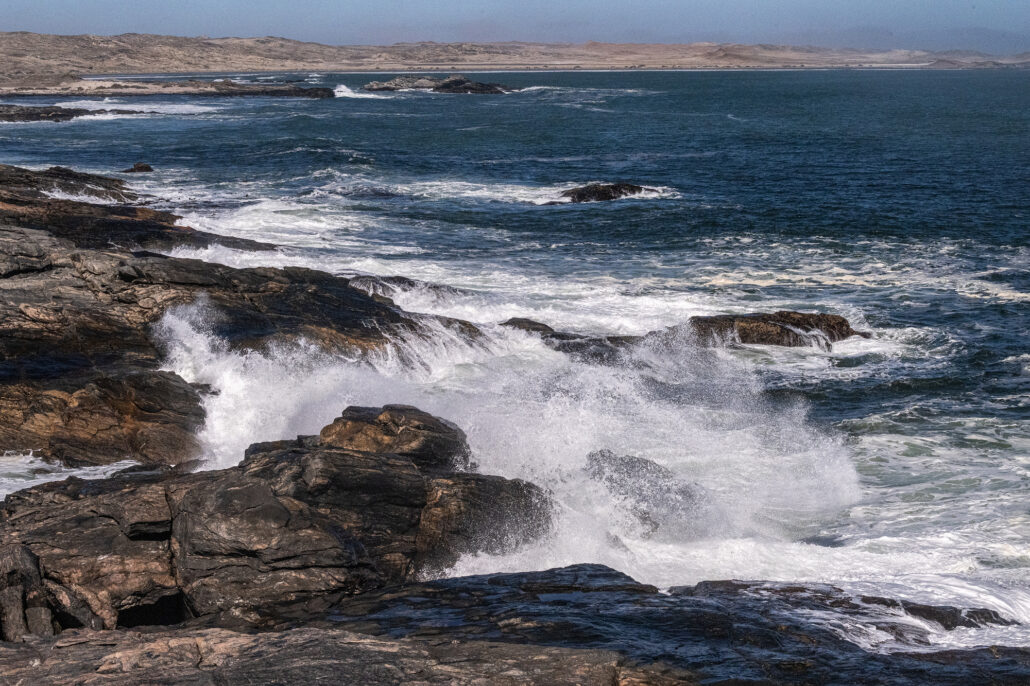
We walked the beaches. Let the waves roar. Got our hair tangled and our thoughts straightened.


On the way back to town, we passed a few random flamingos and loads of seagulls. Bright feathers against deep blue skies. Lüderitz welcomed us again, pastel and peculiar.
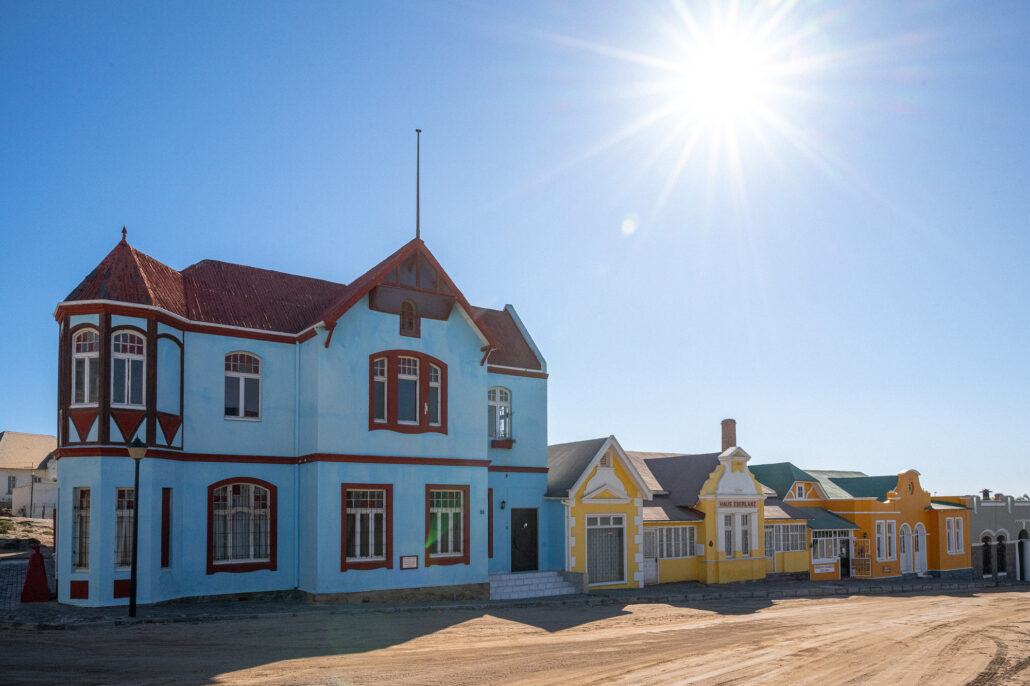
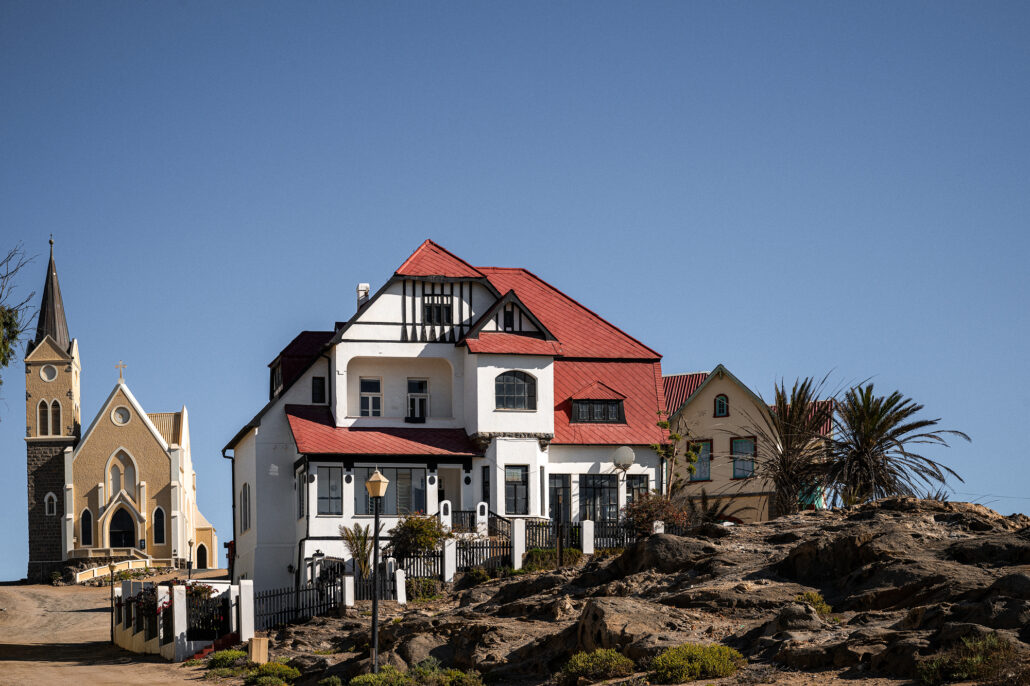
Ending with Oysters and Reflection
We finished our day with sunset at Shark Island. And now we’re writing this from a table at The Portuguese Fisherman restaurant, sipping wine, eating some of the best oysters we’ve ever had.
Lüderitz oysters are grown in the icy Benguela current, making them especially plump and flavorful, mineral-rich, clean, and subtly salty. They’re world-class. Like, could-turn-you-into-an-oyster-snob level.
Tonight, the ghosts are quieter. But we’re listening just the same.
We’ll fall asleep to the sound of waves crashing outside our room.
Full hearts. Wild hair.
And sand in everything.
Takeaways to Tuck in Your Pocket
- Presence builds legacy. You don’t always have to leave behind something big. Just be deeply in the moment.
- The quiet places have the loudest echoes. Listen carefully.
- Travel gives us mirrors, not just windows. The more places we see, the more clearly we understand who we are and who we’re becoming.
- Sometimes, not finding what you’re looking for leads you exactly where you’re meant to go.
#Kolmanskop #GhostTownReflections #DesertHistory #NamibiaLight #StillnessAndLegacy #TravelWithFeeling #LüderitzVibes #NamibiaStories #DiazPoint #Sperrgebiet #NamibianOysters
